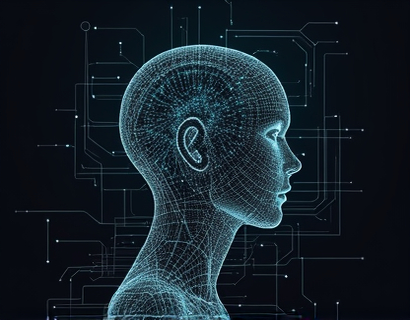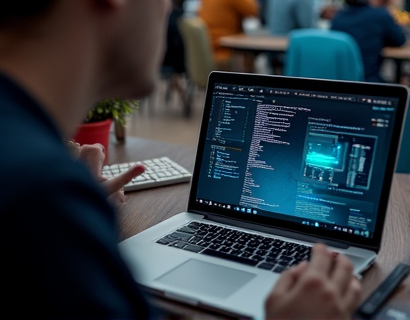Mastering Scalability and Interoperability in Ethereum Layer 2: A 2025 Guide for Developers and Enthusiasts
The Ethereum network, since its inception, has been at the forefront of blockchain innovation, offering a robust platform for decentralized applications and smart contracts. However, as adoption grows, scalability and interoperability have emerged as critical challenges. Ethereum Layer 2 solutions are pivotal in addressing these issues, enabling the network to handle increased transaction volumes while maintaining security and decentralization. This guide aims to provide a comprehensive overview of Layer 2 solutions and ecosystem updates, equipping developers and enthusiasts with the knowledge to navigate the evolving Ethereum landscape.
Understanding Ethereum Layer 2
Ethereum Layer 2 refers to a set of solutions built on top of the Ethereum mainnet (Layer 1) to enhance scalability and reduce costs. These solutions do not alter the core protocol of Ethereum but instead optimize how transactions are processed and settled. The primary goal of Layer 2 is to offload some of the computational load from the main chain, thereby improving throughput and reducing gas fees.
Key concepts in Layer 2 include sidechains, state channels, and rollups. Sidechains are separate blockchains that are linked to Ethereum, allowing for different consensus mechanisms and features. State channels enable multiple transactions to occur off-chain, with the final state being recorded on the main chain. Rollups, particularly Optimistic and Zero-Knowledge Rollups, bundle multiple transactions into a single transaction on the main chain, significantly reducing costs and increasing speed.
Optimistic Rollups: Enhancing Throughput
Optimistic Rollups are one of the most promising Layer 2 solutions for Ethereum. They work by bundling multiple transactions off-chain and submitting a single transaction to the main chain, which acts as a finality mechanism. The assumption is that transactions are valid until proven otherwise. If a dispute arises, the process is reversed, and the correct state is determined.
The primary advantage of Optimistic Rollups is their high transaction throughput, often reaching thousands of transactions per second. This makes them ideal for decentralized finance (DeFi) applications, gaming, and other high-volume use cases. However, they require a trust period during which the final state cannot be altered, which can be a drawback for certain applications.
Zero-Knowledge Rollups: The Future of Scalability
Zero-Knowledge Rollups (ZK Rollups) represent the next generation of Layer 2 solutions. Unlike Optimistic Rollups, ZK Rollups use zero-knowledge proofs to validate the correctness of off-chain transactions without the need for a trust period. This means that transactions can be finalized almost instantly, providing a seamless user experience.
The use of zero-knowledge proofs ensures that the main chain only verifies the final state, significantly reducing computational costs and increasing scalability. ZK Rollups are particularly well-suited for complex smart contracts and large-scale applications, making them a key technology for the future of Ethereum.
Interoperability: Bridging the Gap
Interoperability is another critical aspect of Ethereum's evolution. As different blockchain networks develop, the ability to seamlessly interact and transfer assets between them becomes increasingly important. Ethereum Layer 2 solutions are playing a vital role in enhancing interoperability through various mechanisms.
Cross-Linked Rollups, for instance, allow assets and data to be transferred between different rollup chains and the Ethereum mainnet. This ensures that users can leverage the benefits of Layer 2 while maintaining the security and decentralization of the main chain. Additionally, interoperability protocols like Polygon and Binance Smart Chain are integrating with Ethereum Layer 2 solutions to create a more connected ecosystem.
Ecosystem Updates and Developments
The Ethereum ecosystem is constantly evolving, with numerous updates and developments aimed at enhancing Layer 2 capabilities. One significant update is the Ethereum 2.0 transition, which includes the shift to a proof-of-stake (PoS) consensus mechanism. This upgrade not only improves security and sustainability but also paves the way for more advanced Layer 2 solutions.
Another important development is the introduction of the Ethereum Virtual Machine (EVM) upgrades, which enhance the flexibility and efficiency of smart contracts. These upgrades support new types of rollups and improve the overall performance of the network. Furthermore, the deployment of new Layer 2 protocols and the continuous optimization of existing ones reflect the community's commitment to scalability and interoperability.
Practical Applications and Use Cases
The benefits of Ethereum Layer 2 solutions extend across various industries and applications. In DeFi, Layer 2 solutions enable faster and cheaper transactions, making financial services more accessible to a broader audience. Gaming platforms can leverage Layer 2 to create more complex and engaging experiences without compromising on performance.
Non-Fungible Tokens (NFTs) also benefit from Layer 2, as the reduced gas fees and increased throughput make it more feasible to create and trade high-volume digital assets. Additionally, Layer 2 solutions are crucial for building scalable decentralized applications (dApps) that require high transaction volumes, such as social media platforms and marketplaces.
Challenges and Considerations
While Layer 2 solutions offer significant advantages, they also come with challenges that developers and users must consider. One major concern is the complexity of implementing and integrating these solutions. Developers need to have a deep understanding of the underlying mechanics to ensure secure and efficient deployment.
Another challenge is the potential for centralization, especially with certain Layer 2 protocols that rely on validators or operators. Ensuring decentralization and trustlessness remains a priority for the Ethereum community. Additionally, the user experience must be seamless, with minimal friction for end-users to adopt and benefit from Layer 2 technologies.
Future Outlook
Looking ahead, the future of Ethereum Layer 2 is promising. The ongoing development of ZK Rollups and other advanced solutions will continue to push the boundaries of scalability and interoperability. The integration of Layer 2 with emerging technologies like Web3 and the Metaverse will further expand the potential applications and use cases.
As the Ethereum ecosystem grows, collaboration between developers, researchers, and the community will be essential in addressing challenges and driving innovation. The focus on user-centric design and accessibility will ensure that Layer 2 solutions benefit a wide range of users, from casual enthusiasts to professional developers.
In conclusion, mastering Ethereum Layer 2 is crucial for anyone involved in the blockchain space. By understanding and leveraging these solutions, developers and enthusiasts can contribute to a more scalable, efficient, and interconnected Ethereum ecosystem. Stay informed, stay innovative, and be part of the next chapter in blockchain technology.










































